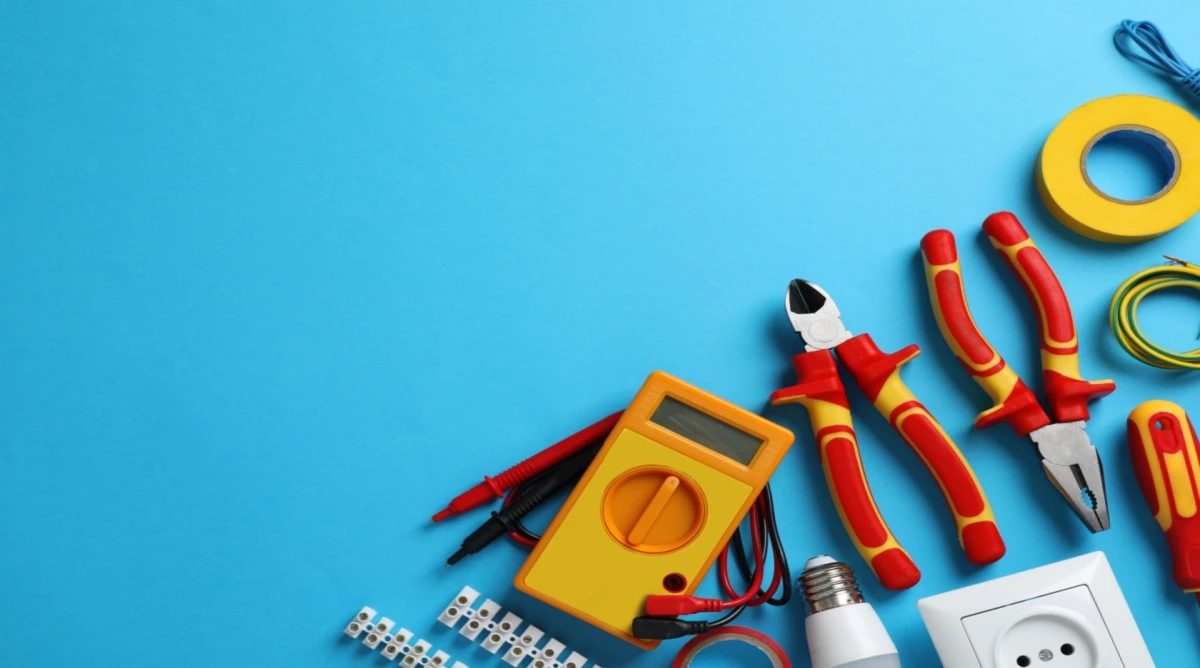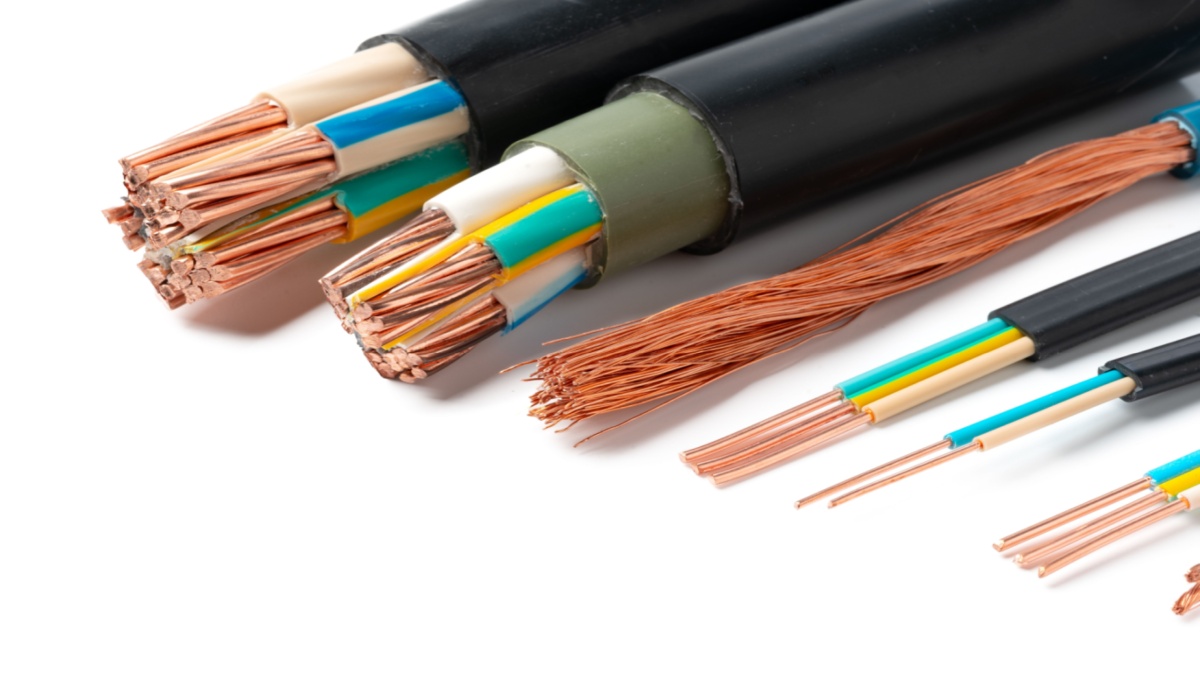Table of Contents
Quality Service Guarantee Or Painting Free

Get a rental agreement with doorstep delivery

Find the BEST deals and get unbelievable DISCOUNTS directly from builders!

5-Star rated painters, premium paints and services at the BEST PRICES!
Loved what you read? Share it with others!


Submit the Form to Unlock the Best Deals Today
Help us assist you better
Check Your Eligibility Instantly

Experience The NoBrokerHood Difference!
Set up a demo for the entire community
12 Essential Electrical Hand Tools List for Electricians and DIY Projects in 2025
Table of Contents
Using the correct hand tools is essential for guaranteeing safety, accuracy, and efficiency in electrical work. Whether you like do-it-yourself projects or are a seasoned electrician, knowing the equipment you need and how to use it properly is essential. From voltage testers to wire strippers, the correct Electrical hand tools list will make all the difference in your capacity to effectively and safely finish jobs. This blog guarantees that you have the proper tools to handle any electrical work with confidence by giving a summary of the basic electrical hand tools, their applications, and how to choose the correct ones for your purpose.
Why do Electricians Need the Right Tools?
To guarantee safety, accuracy, and efficiency in whatever they do, electricians depend on certain hand tools. Many times, electrical work includes handling fragile components, complex wiring, and high-voltage systems. Minimizing risks and improving the quality of work depends much on the appropriate tools. Every electrician should so give top priority to having the correct tools:
- The electrician trade tools list includes voltage testers and insulated pliers, which protect electricians from mishaps and electrical shocks. Good tools help reduce equipment damage and short-circuit danger.
- The correct tools enable electricians to do jobs quicker and more precisely. For troubleshooting, for example, a multimeter offers exact readings, and fish tape makes wire pulling through conduits easier.
- Industry requirements require accuracy and dependability. Crimping tools and circuit finders guarantee that repairs and installations satisfy these criteria.
- Correct tools help to avoid damage to electrical components, therefore extending their lifetime and preserving system integrity.
- Client Satisfaction: Good and fast work improves the standing of an electrician and creates confidence among clients.
Choosing the correct electrical hand tools is not only a question of convenience but also a vital component of professionalism, performance, and safety in the electrical business. A well-equipped electrician is always ready to tackle difficult tasks boldly and effectively.
Quality Service Guarantee Or Painting Free

Get a rental agreement with doorstep delivery

Find the BEST deals and get unbelievable DISCOUNTS directly from builders!

5-Star rated painters, premium paints and services at the BEST PRICES!
Electrical Hand Tools List in 2025
It is very important to be aware of the hand tools that are necessary for electrical repairing or wiring. Here are the top 10 tools for electricians:
| Material Name | Price (INR) | Use Case |
| Wire Stripper | 500-1,500 | Stripping insulation from wires. |
| Multimeter | 2,000-5,000 | Measuring voltage, current, and resistance. |
| Screwdriver Set | 800-2,500 | Tightening or loosening screws. |
| Pliers (Needle Nose) | 300-1,200 | Gripping, bending, or cutting wires. |
| Voltage Tester | 150-800 | Checking live circuits safely. |
| Cable Cutter | 1,000-3,000 | Cutting electrical cables cleanly. |
| Fish Tape | 1,200-3,500 | Pulling wires through conduits. |
| Crimping Tool | 500-2,000 | Securing connectors to cables. |
| Electrical Tape | 50-200 | Insulating exposed wires. |
| Circuit Finder | 3,000-6,000 | Identifying specific circuits. |
| Conduit Bender | 1,500-4,000 | Bending electrical conduits. |
| Wire Pulling Lubricant | 500-1,500 | Reducing friction during wire pulls. |
Best 12 Electrical Hand Tools Name and Their Use Case
Every electrician starts their job using electrical hand tools. Here is a comprehensive view of list of tools for an electrician, along with their particular uses:
1. Wire Stripper
Removing insulation from electrical wires without damaging the conductor depends on wire strippers, which are very important. For correct couplings, they allow exact cutting and stripping. Perfect for both home and business projects, these tools are changeable to fit different wire diameters. A basic chore for electricians, wire stripping is one of the top electrician tools. It guarantees a damage-free, clean finish to electrical cables for safe connections. Adjustable gauges and cutting blades included in modern wire strippers speed up and ensure the procedure is safe.
2. Multimeter
In electrical systems, a multimeter is a flexible diagnostic instrument used to gauge voltage, current, and resistance. It helps to find flaws in circuits, guaranteeing appropriate safety and functioning. A multimeter is essential whether checking an industrial panel or fixing a broken item. Essential for both fieldwork and bench testing, advanced multimeters now contain capabilities for measuring capacitance, temperature, and continuity.
3. Screwdriver Set
Installing or removing screws in electrical panels, outlets, and fittings calls both a screwdriver's necessary ability, usually including flathead and Phillips-head varieties to suit various screw designs, a set guarantees that electricians can easily tackle a range of jobs. Electricians sometimes need insulated screwdrivers to work safely on active circuits. Ergonomic handles and magnetic tips further reduce hand fatigue and increase productivity.
4. Needle Nose Pliers
These pliers are perfect for holding, bending, or cutting wires in tight or difficult-to-reach areas. Their thin form makes them ideal for difficult jobs like bending tiny loops in wires for connections or wire attachment to terminal blocks. Needle-nose pliers are also flexible, making them suitable for precise work in electronics or manufacturing tiny electrical components.
5. Voltage Tester
Voltage testers safely and rapidly discover if a circuit is active. Because they guarantee that circuits are de-powered before repairs or installations, this equipment is essential for electricians working on outlets, switches, or fixtures. Non-contact voltage testers are particularly popular. They allow users to identify live circuits without direct contact, improving safety.
6. Cable Cutter
Cable cutters are designed to cut electrical cables cleanly and precisely. Their ergonomic grips and sharp blades help reduce fraying, guaranteeing a smooth finish suitable for terminals or connections. Hardened steel blades and ratcheting systems for easily handling larger wires also define premium cable cutters.
7. Fish Tape
Fish tape is used to drag wires through conduits, especially in complicated installations where cables must negotiate curves or lengthy lengths. It also makes running cables in completed walls or ceilings easier. Made of fiberglass or steel, modern fish tapes provide flexibility and durability for demanding applications.
8. Crimping Tool
Crimping tools are among the most important electrical hand tools. They utilize pressure to crimp connections together, securing them to electrical wires. This guarantees strong, dependable connections in terminals, plugs, or splices—vital for electrical safety and performance. For big-scale jobs, automated crimping equipment increases uniformity and speed.
9. Electrical Tape
Securing wire junctions and shielding exposed cables depend on electrical tape. It is in the basic electrician tools list that protects against moisture and abrasion, enhances connection durability, and prevents short circuits. Excellent electrical tapes fit for indoor and outdoor uses and are flame-resistant.
10. Circuit Finder
Circuit finders save time during troubleshooting or remodeling by identifying certain circuits in breaker panels. They also help electricians track circuits without guessing, increasing their accuracy and efficiency. In big or multi-story structures, wireless models help you find circuits even more easily.
11. Conduit Bender
Conduit benders help form conduits to suit installation criteria or avoid obstructions. They let electricians create exact bends, ensuring that wire paths are visually beautiful and useful. Electricians in conduit installations often use modern types with degree indications to guarantee accuracy.
12. Wire Pulling Lubricant
When the wire is pulled across conduits, this lubricant lessens friction, minimizing cable damage and improving process efficiency. It is very helpful in lengthy or difficult conduit runs. Nowadays, environmentally friendly lubricants abound and provide great performance and are free of damaging residue.
Choosing the Right Tools for Your Needs
Safety, efficiency, and long-term value depend on selecting the correct electrician tools and equipment list. This is a guide to enable you to make the best decisions:
- Evaluate your requirements. Name the jobs you do most often. If you work on big projects, invest in modern, high-capacity multimeters or conduit benders.
- Safety should always come first for electricians; insulated tools are non-negotiable as they shield against electrical shocks while handling live circuits.
- Although high-quality tools may cost more initially, their longevity and improved performance eventually help you save money.
- Particularly for extended usage, ergonomic designs of tools help to lower hand tiredness and increase productivity.
- Renowned brands may follow safety and quality criteria, thereby guaranteeing dependability and consistency.
- Start with basic tools and progressively build your collection as your knowledge increases to be budget-wise.
- Tools should be kept in excellent shape and readily available using toolboxes or organizers.
- Stay Current: Tools change as technology does. Watch sector developments to expand your toolset.
This electrician toolbox list will help you create a toolbox that not only meets your present demands but also prepares you for future difficulties. Thus, you can guarantee safe and effective work in every project.
Ultimately, the success and safety of any electrical job depend on having the correct hand tools. Equipped with the right gear, electricians can guarantee better outcomes, work more quickly, and reduce unneeded dangers related to defective or unsuitable equipment. Ensuring that every job is finished to the best of standards also depends critically on regular maintenance and an Electrical hand tools list. In the end, the correct tools make electrical work not only simpler but also safer, therefore ensuring successful projects and more peace of mind. You guarantee the best outcomes every time by giving your tool choices great thought.
FAQs About Electrical Hand Tools List
Ans: For electricians, wire strippers, insulated screwdrivers, needle-nose pliers, cable cutters, voltage testers, and crimping tools are basic instruments. These instruments provide safety and efficiency during electrical operations by cutting, stripping, bending, and testing electrical wires and connections.
Ans: Indeed, insulated tools are strongly advised, particularly for live electrical components. Their design prevents electricity from passing through the handle, shielding electricians from electrical shock.
Ans: Regular cleaning of electrical hand tools helps keep them free from dirt, dust, and trash that can cause wear. Lubricating moving components guarantees flawless performance and avoids corrosion.
Ans: Although inexpensive equipment might save money up front, for long-term performance, durability, and safety, investing in quality tools is vital. Quick wear on low-quality equipment may cause inefficiencies and safety risks.
Ans: Choose high-duty cable cutters for hefty cables; they are meant to cut through thick wires without compromising the interior components. You might also want pliers with a firm grip, and a wire stripper fit for bigger wire gauges.
Ans: Select tools so that they fit the work at hand. For wire connections, use crimping tools and wire strippers. For cutting, use cable cutters. Pick insulated screwdrivers for tightening or loosening screws.
Loved what you read? Share it with others!
Most Viewed Articles

Wire Colour Code in India: Electrical Safety Simplified
December 31, 2024
16428+ views

January 2, 2025
12466+ views

Top 10 Wire Companies in India: Founding Year, Valuation, Share Value and More Details in 2025
January 2, 2025
7383+ views

Installing Water Meters in Your Home Society
January 15, 2025
5213+ views

Wire Repair Essentials: A DIY Guide to Fixing Cables
December 20, 2023
3739+ views
Recent blogs in
Installing Water Meters in Your Home Society
January 15, 2025 by Simon Ghosh
Top 10 Wire Companies in India: Founding Year, Valuation, Share Value and More Details in 2025
January 2, 2025 by Krishnanunni H M
January 2, 2025 by Siri Hegde K
Wire Colour Code in India: Electrical Safety Simplified
December 31, 2024 by Priyanka Saha
12 Essential Electrical Hand Tools List for Electricians and DIY Projects in 2025
December 26, 2024 by Ananth




Join the conversation!